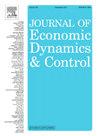Phase transitions in debt recycling
IF 2.3
3区 经济学
Q2 ECONOMICS
引用次数: 0
Abstract
Debt recycling is an aggressive equity extraction strategy that potentially permits faster repayment of a mortgage. While equity progressively builds up as the mortgage is repaid monthly, mortgage holders may obtain another loan they could use to invest on a risky asset. The wealth produced by a successful investment is then used to repay the mortgage faster. The strategy is riskier than a standard mortgage-repayment plan since fluctuations in the house market and investment's volatility may also lead to a fast default, as both the mortgage and the liquidity loan are secured against the same good. The general conditions of the mortgage holder and the outside market under which debt recycling may be recommended or discouraged have not been fully investigated. In this paper, in order to evaluate the effectiveness of traditional monthly mortgage repayment versus debt recycling strategies, we build a dynamical model of debt recycling and study the time evolution of equity and mortgage balance as a function of loan-to-value ratio, house market performance, and return of the risky investment. We find that the model has a rich behavior as a function of its main parameters, showing strongly and weakly successful phases – where the mortgage is eventually repaid faster and slower than the standard monthly repayment strategy, respectively – a default phase where the equity locked in the house vanishes before the mortgage is repaid, signaling a failure of the debt recycling strategy, and a permanent re-mortgaging phase – where further investment funds from the lender are continuously secured, but the mortgage is never fully repaid. The strategy's effectiveness is found to be highly sensitive to the initial mortgage-to-equity ratio, the monthly amount of scheduled repayments, and the economic parameters at the outset. The analytical results are corroborated with numerical simulations with excellent agreement.
债务回收中的相变
债务回收是一种激进的股权提取策略,可能会让抵押贷款更快偿还。随着每月偿还抵押贷款,权益逐渐增加,抵押贷款持有人可能会获得另一笔贷款,他们可以用来投资风险资产。成功投资所产生的财富随后被用来更快地偿还抵押贷款。这种策略比标准的抵押贷款还款计划风险更大,因为房屋市场的波动和投资的波动也可能导致快速违约,因为抵押贷款和流动性贷款都是用同一种商品作担保的。抵押贷款持有人和外部市场的一般情况下,债务回收可能被建议或不被鼓励尚未被充分调查。为了评估传统的月供策略与债务回收策略的有效性,我们建立了一个债务回收的动态模型,并研究了股权和抵押贷款余额随贷款价值比、房屋市场表现和风险投资回报的时间演变。我们发现该模型作为其主要参数的函数具有丰富的行为,显示出强烈和弱成功阶段-抵押贷款最终偿还的速度分别比标准的每月还款策略快和慢-在抵押贷款偿还之前锁定在房子中的股权消失的违约阶段,表明债务回收策略失败。还有一个永久性的再抵押阶段——贷款人的进一步投资资金会持续得到担保,但抵押贷款永远不会全部偿还。研究发现,该策略的有效性对初始抵押贷款与权益比率、每月计划还款金额以及一开始的经济参数高度敏感。数值模拟结果与分析结果吻合较好。
本文章由计算机程序翻译,如有差异,请以英文原文为准。
求助全文
约1分钟内获得全文
求助全文
来源期刊

Journal of Economic Dynamics & Control
ECONOMICS-
CiteScore
3.10
自引率
10.50%
发文量
199
期刊介绍:
The journal provides an outlet for publication of research concerning all theoretical and empirical aspects of economic dynamics and control as well as the development and use of computational methods in economics and finance. Contributions regarding computational methods may include, but are not restricted to, artificial intelligence, databases, decision support systems, genetic algorithms, modelling languages, neural networks, numerical algorithms for optimization, control and equilibria, parallel computing and qualitative reasoning.
 求助内容:
求助内容: 应助结果提醒方式:
应助结果提醒方式:


